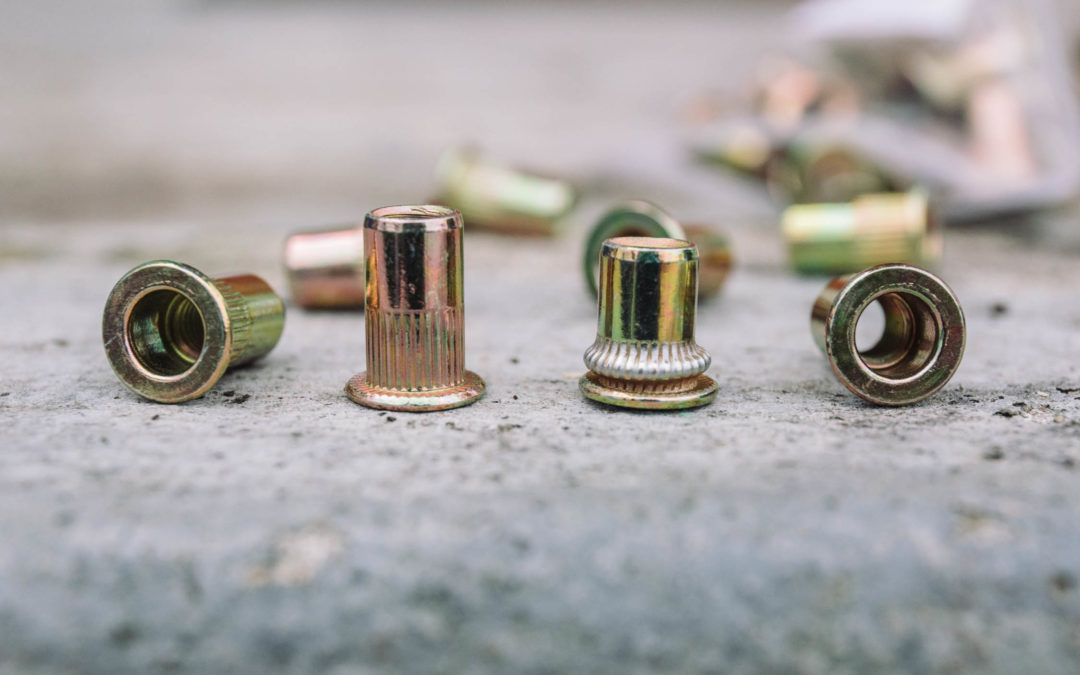Fasteners are a critical component in everyday objects and complex machinery, serving as essential hardware that mechanically joins or affixes two or more objects together. Their reliability and strength ensure structural integrity and longevity in a variety of applications, from simple household fixtures to sophisticated aerospace assemblies.
Among the different options available, a rivet nut, often referred to as “revenues” or “nutserts,” is an innovative and versatile fastener. They provide a reliable and efficient method to attach components in situations where only one side of a panel is accessible. This blog provides an overview of these nimble essentials and the tools used to install them, helping you understand their application, types, and the right way to use them.
Know the Basics
They are internally threaded and counterbored tubular fasteners designed to secure two or more materials by creating a strong, reusable threaded anchoring point. They are installed by creating a bulge on the back side of the panel, like rivets. This makes them ideal for use in metal sheets, plastics, and other materials where traditional threaded fasteners are impractical, such as blind nut applications.
Key Features
- Versatility: They can be installed in many materials, including thin sheet metals and plastics.
- Strength: Provide a vital thread in thin materials with limited thread engagement.
- Accessibility: Can be installed from one side of the workpiece.
- Reusability: They create a permanent and reusable thread.
Different Types
These fasteners come in various forms to suit different materials and applications. The most common types include:
- Flat Head: These large flanges provide an increased load-bearing surface and are used where hole size is a significant concern.
- Countersunk Head: They sit flush with the material’s surface and are used when a flush surface is required.
- Hexagonal: Designed to prevent spinning, especially in high torque applications, due to their hexagonal shape.
- Knurled Body: These have a knurled body that resists rotation and provides increased resistance against turning.
Each type serves a specific purpose, and the choice depends on the material thickness, application requirements, and desired finish. For instance, rivet nut inserts are particularly useful in applications with a strong threaded connection in thin materials, offering a reliable solution for various industrial and automotive uses.
Choosing the Right Nut
To select the appropriate nut, consider the following factors:
- Material Thickness: Ensure its grip range matches your material’s thickness.
- Material Type: Some nuts are better suited for plastics, others for metal.
- Load Requirements: Consider the load that the connection will need to support.
- Environment: For corrosive environments, stainless steel or aluminum nuts are preferred.
Installation Process
Installing a nut involves several key steps:
- Drill the Hole: The first step is to drill or punch a hole in the workpiece. The hole size should closely match the diameter of the nut.
- Insert the nut: Place it onto the tool’s mandrel.
- Squeeze the Tool: Activate the tool (by squeezing the handle with manual tools or triggering the power with pneumatic/electric tools) to pull the mandrel back and expand the nut against the back side of the material.
Rivet Nut Tools
Installing these fasteners requires specialized tools ranging from simple hand tools to sophisticated pneumatic or battery-powered tools. Here’s a breakdown of the common types:
Hand Tools
These are manual tools that work much like a rivet gun. A typical hand tool has a threaded mandrel onto which the nut is threaded. When the handles are squeezed, the tool pulls the mandrel, deforming the backside of the nut to secure it in place.
Pneumatic and Battery-Powered Tools
Pneumatic and battery-powered tools are used for high-volume or industrial applications. These tools are faster and require less manual effort. They ensure consistent installation with minimal operator fatigue.
Rivet nut is a reliable and robust solution for creating threaded solid joints in various materials. By choosing the right type of nut and tool, you can improve your assembly process and ensure durable and efficient fastening.









